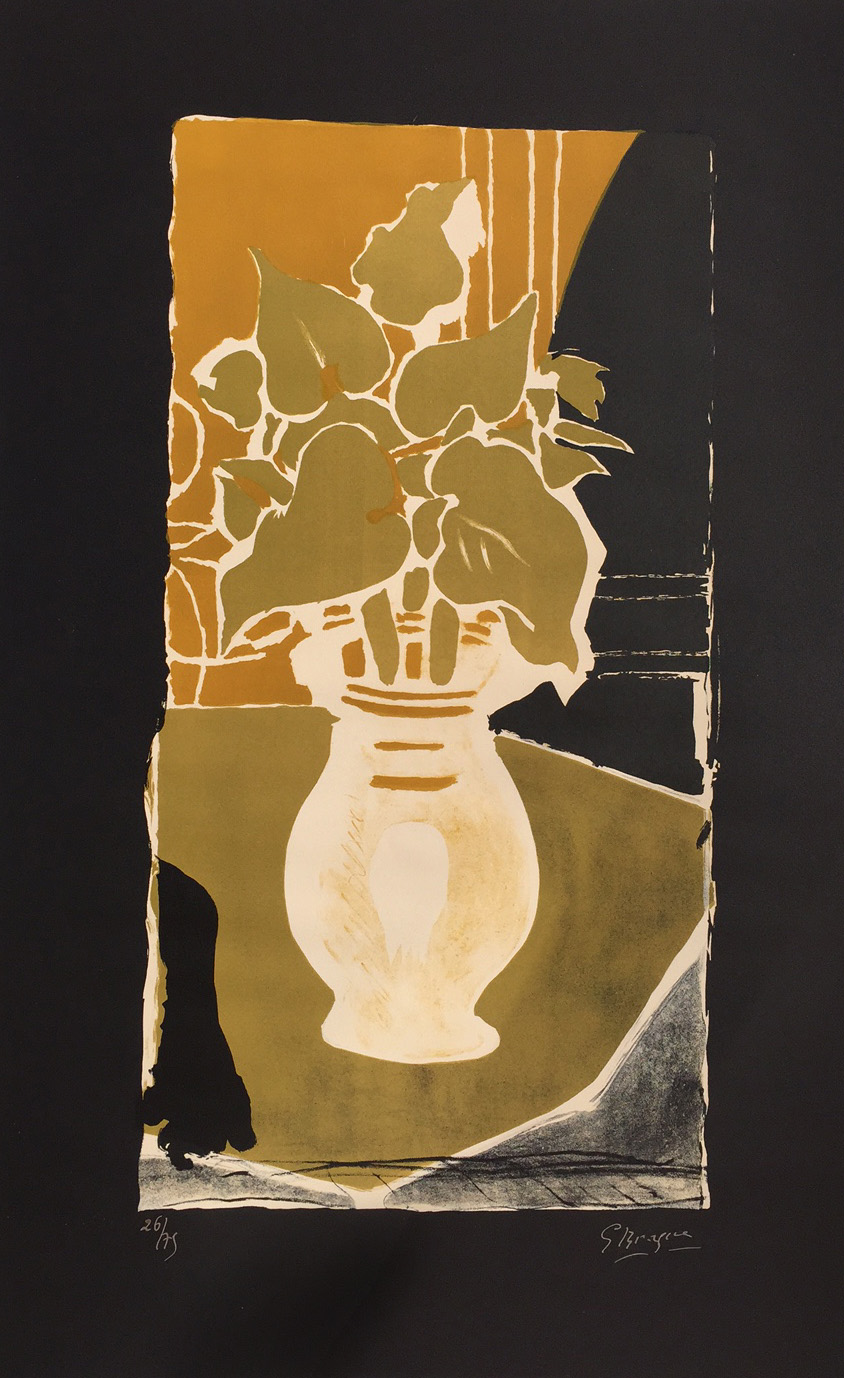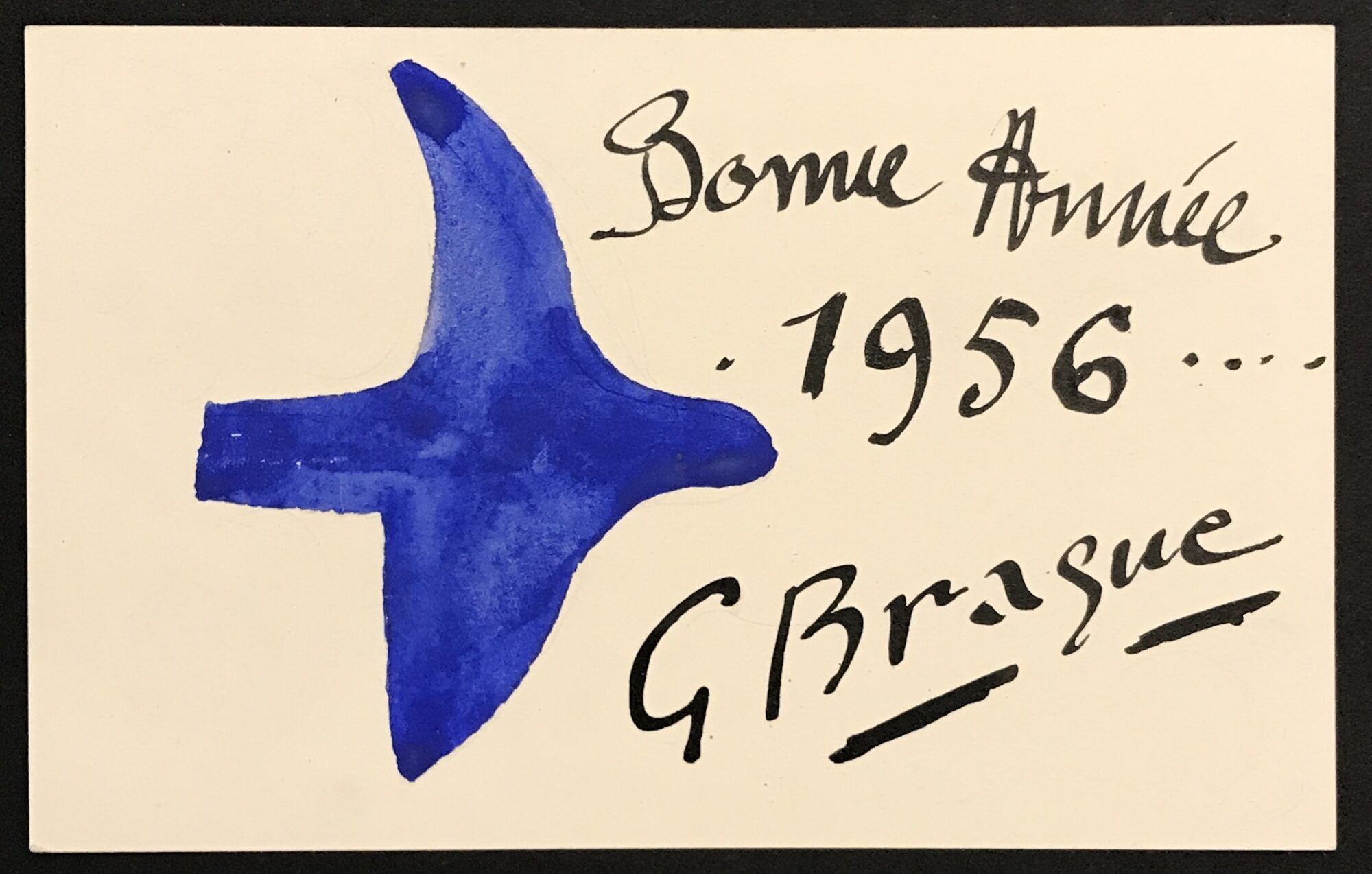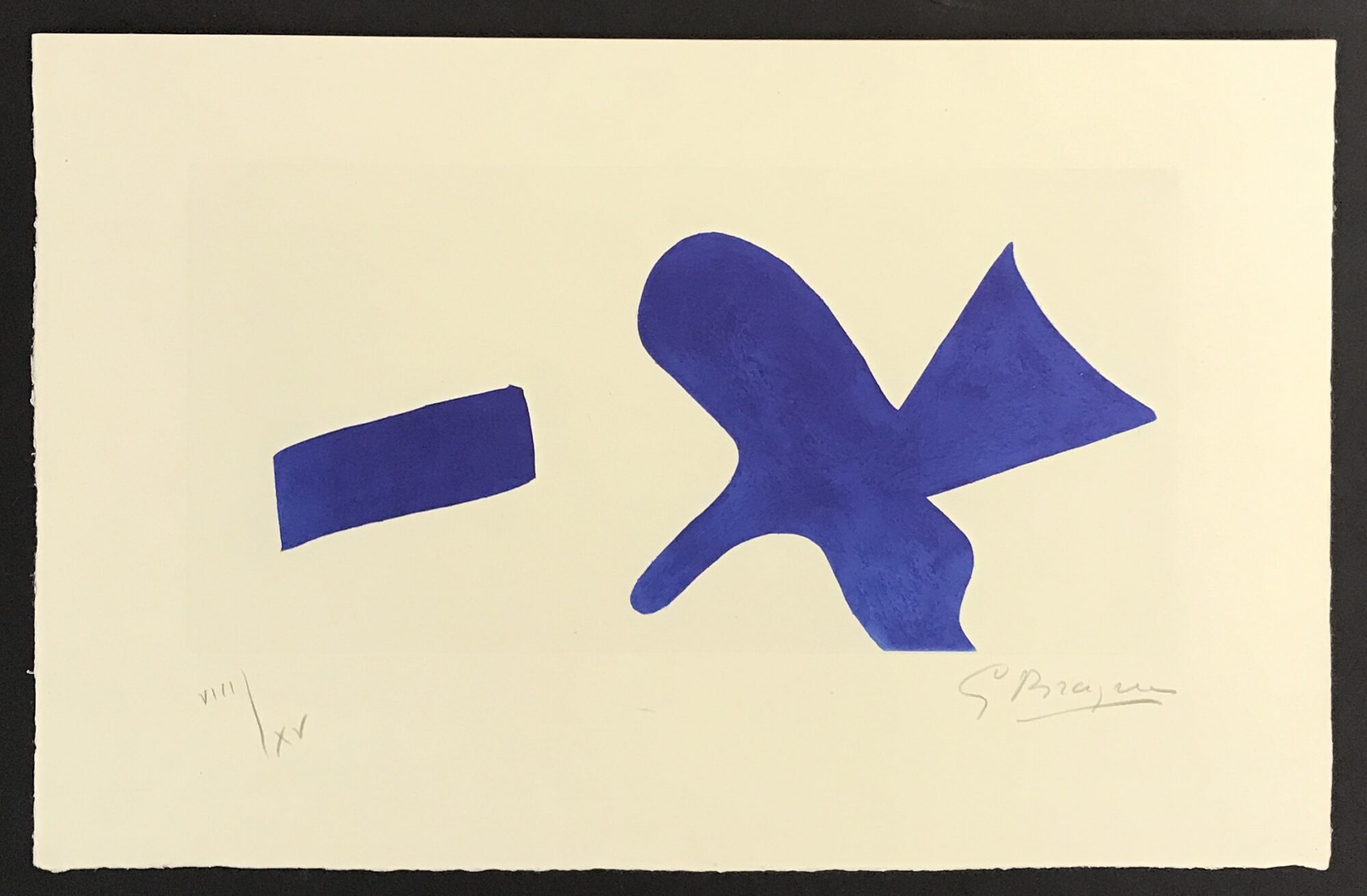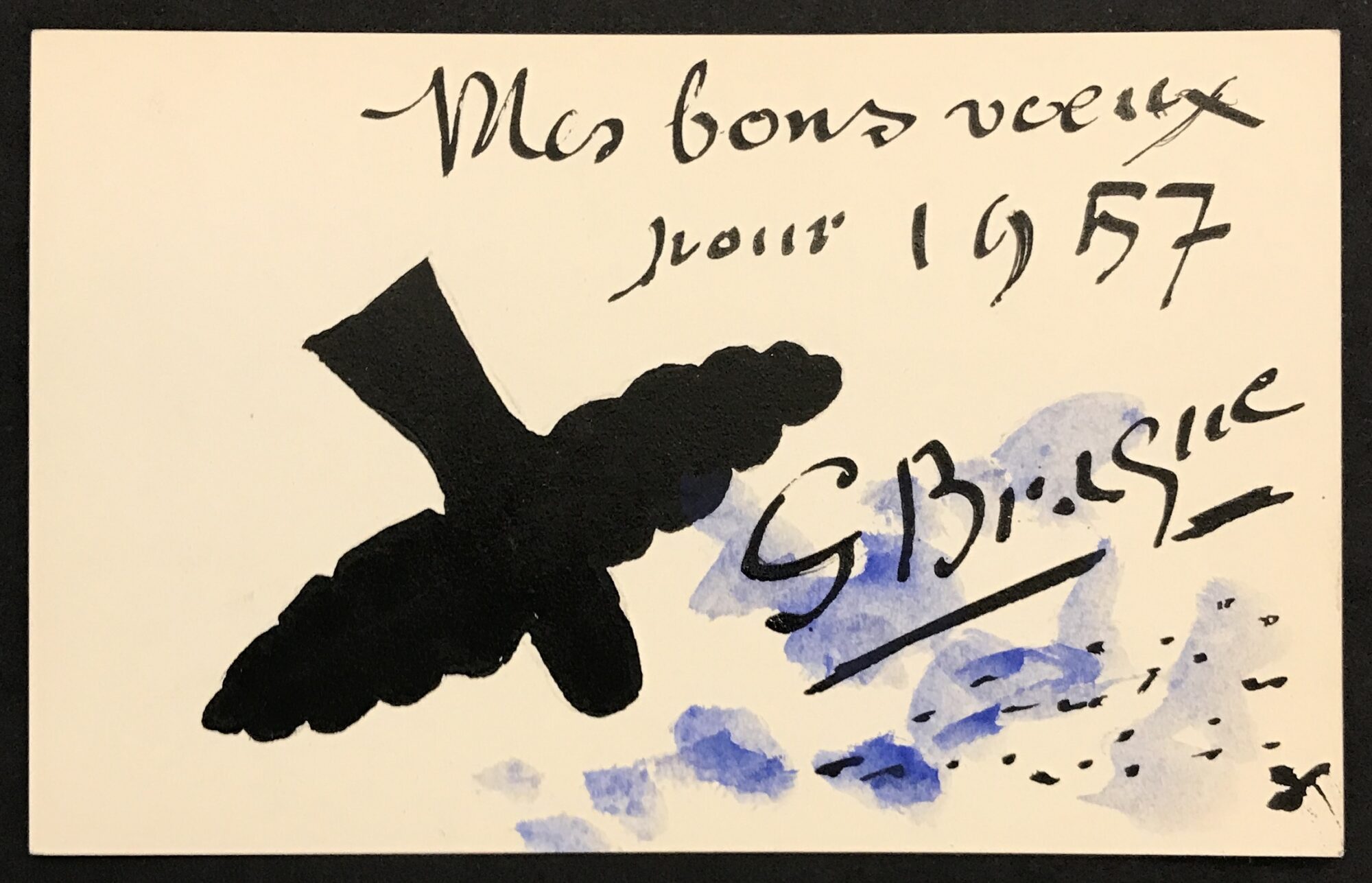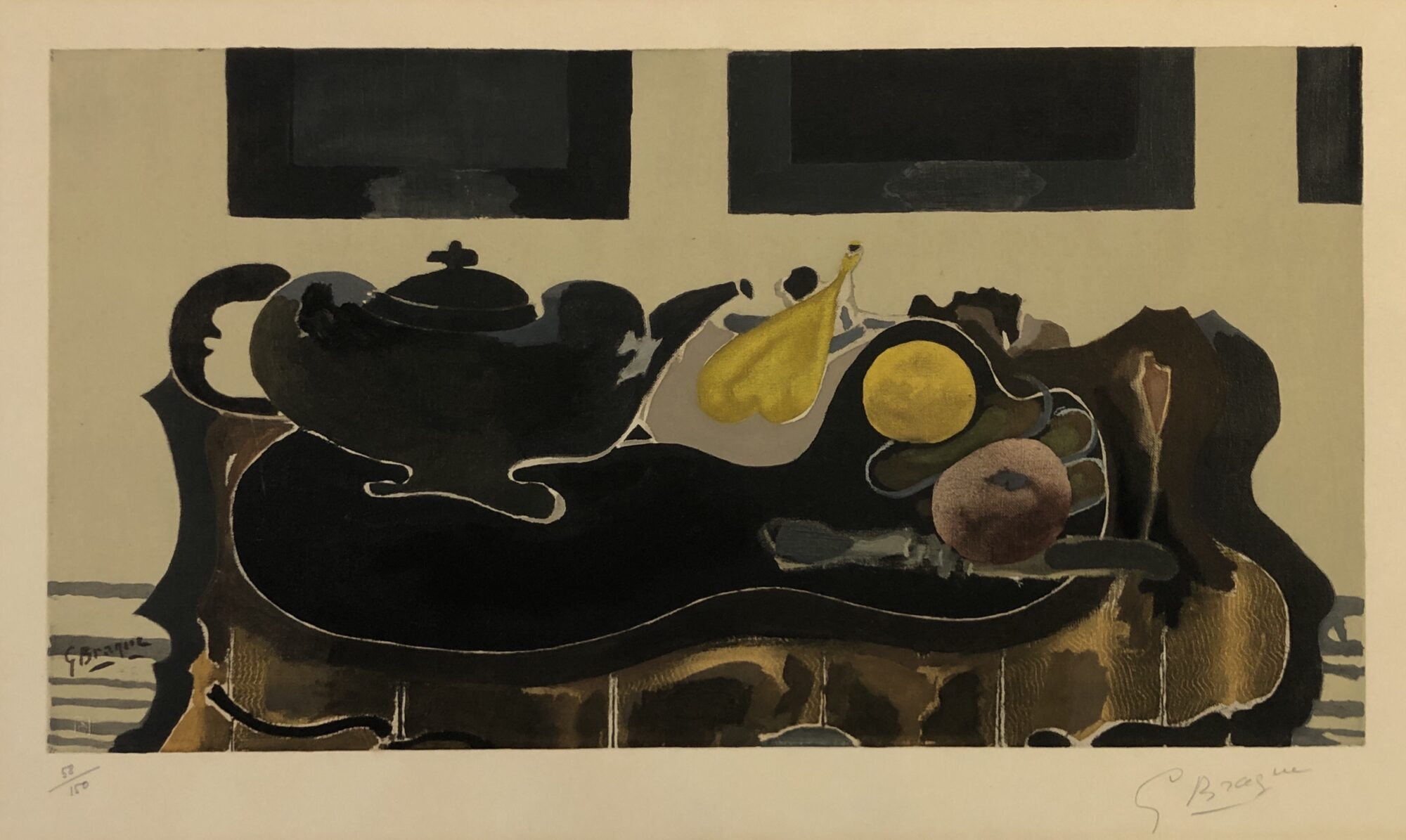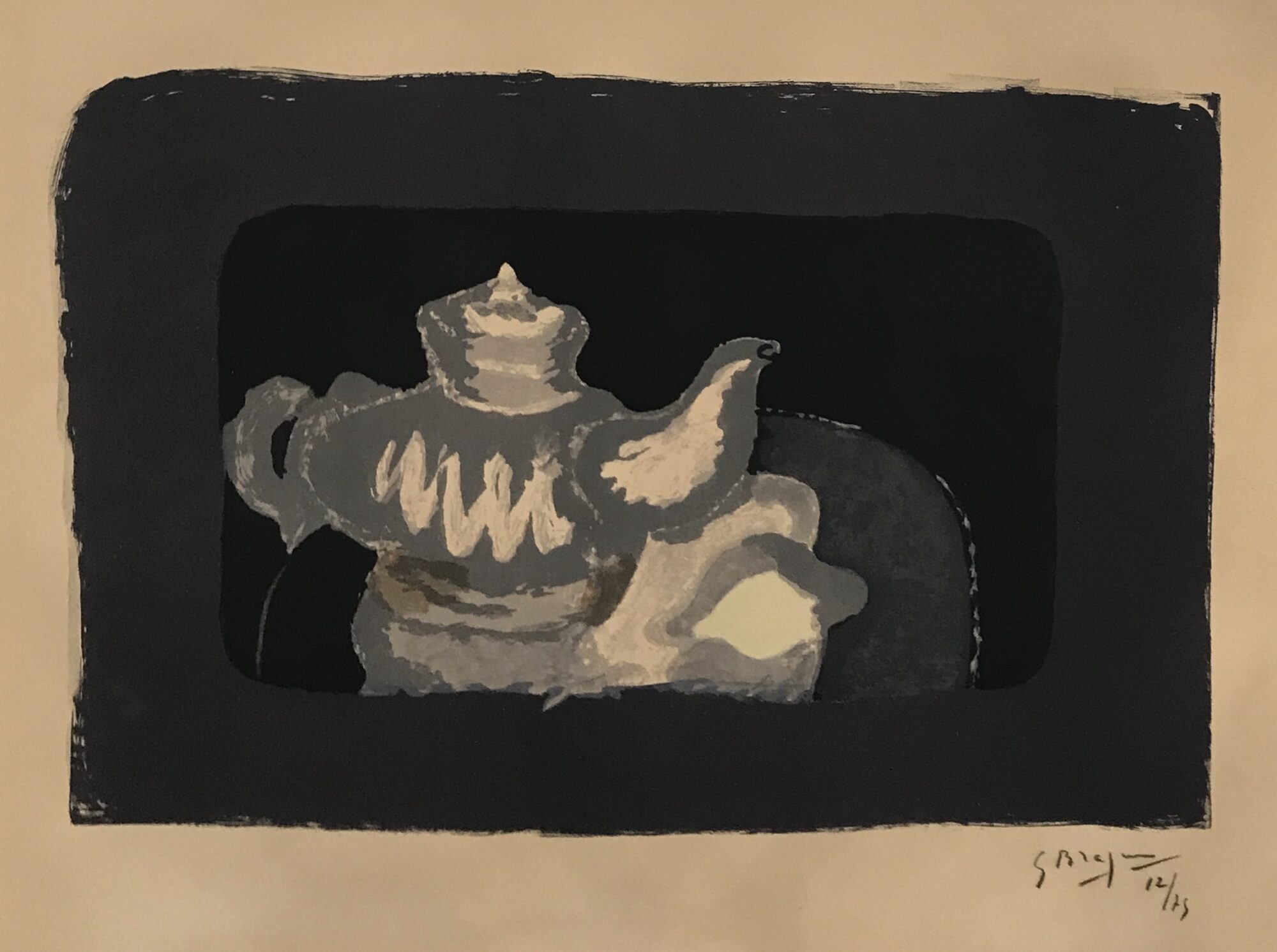Georges Braque – Feuilles Couleurs Lumiere
Georges Braque, Feuilles Couleurs Lumiere is a colored Lithograph on Arches Paper. This print is signed and numbered from the edition of 75. Published by Maeght, Paris and Printed by Mourlot, Paris. Vallier 86.
French painter, collagist and sculptor Georges Braque is, along with Pablo Picasso, renowned as the co-founder of Cubism, which revolutionized 20th-century painting. In his work, objects are fragmented and reconstructed into geometric forms, fracturing the picture plane in order to explore a variety of viewpoints.
During World War II Braque remained in Paris. His paintings at that time, primarily still lifes and interiors, became more somber. In addition to paintings, Braque also made lithographs, engravings, and sculptures. From the late 1940s he treated various recurring themes such as birds, ateliers, landscapes, and seascapes. In 1954 he designed stained-glass windows for the church of Varengeville. During the last few years of his life, Braque’s ill health prevented him from undertaking further large-scale commissions, but he continued to paint, make lithographs, and design jewelry. He died on August 31, 1963, in Paris.
Feuilles Couleurs Lumiere, portrays the continuous use of Cubism and his fascination of still life even through his later works. Braque’s fascination with these two ideas remained constant until his death.
| Title | Feuilles Couleurs Lumiere |
|---|---|
| Alt. Title | Leaves, Color, Light |
| Medium | Lithograph |
| Year | 1953 |
| Edition | 75 |
| Catalogue Raisonné | Vallier 86 |
| Signature | Signed, numbered |
| Size | 38.5 x 23.5 (in) 97.5 x 60 (cm) |
| Price | Price on Request |
Description
Georges Braque, Feuilles Couleurs Lumiere is a colored Lithograph on Arches Paper. This print is signed and numbered from the edition of 75. Published by Maeght, Paris and Printed by Mourlot, Paris. Vallier 86.
French painter, collagist and sculptor Georges Braque is, along with Pablo Picasso, renowned as the co-founder of Cubism, which revolutionized 20th-century painting. In his work, objects are fragmented and reconstructed into geometric forms, fracturing the picture plane in order to explore a variety of viewpoints. “The hard-and-fast rules of perspective … were a ghastly mistake which…has taken four centuries to redress,”.
After World War I Braque’s work became freer and less schematic. His fame grew in 1922 as a result of an exhibition at the Salon d’Automne in Paris. In the mid-1920s Braque designed the decor for two Sergei Diaghilev ballets. By the end of the decade, he had returned to a more realistic interpretation of nature, although certain aspects of Cubism always remained present in his work. In 1931 Braque made his first engraved plasters and began to portray mythological subjects. His first important retrospective took place in 1933 at the Kunsthalle Basel. He won first prize at the Carnegie International, Pittsburgh, in 1937.
During World War II Braque remained in Paris. His paintings at that time, primarily still lifes and interiors, became more somber. In addition to paintings, Braque also made lithographs, engravings, and sculptures. From the late 1940s he treated various recurring themes such as birds, ateliers, landscapes, and seascapes. In 1954 he designed stained-glass windows for the church of Varengeville. During the last few years of his life, Braque’s ill health prevented him from undertaking further large-scale commissions, but he continued to paint, make lithographs, and design jewelry. He died on August 31, 1963, in Paris.
Feuilles Couleurs Lumiere, portrays the continuous use of Cubism and his fascination of still life even through his later works. Braque’s fascination with these two ideas remained constant until his death.
Georges Braque, Feuilles Couleurs Lumiere
Georges Braque prints for sale
Georges Braque art for sale
Additional information
| Title | Feuilles Couleurs Lumiere |
|---|---|
| Alt. Title | Leaves, Color, Light |
| Medium | Lithograph |
| Year | 1953 |
| Edition | 75 |
| Catalogue Raisonné | Vallier 86 |
| Signature | Signed, numbered |
| Size | 38.5 x 23.5 (in) 97.5 x 60 (cm) |
| Price | Price on Request |


